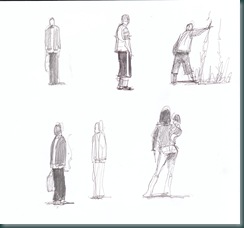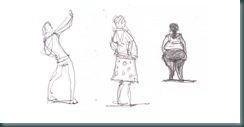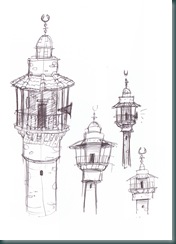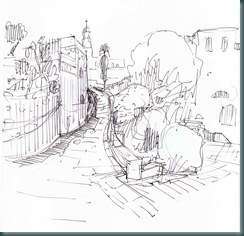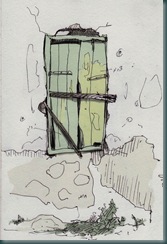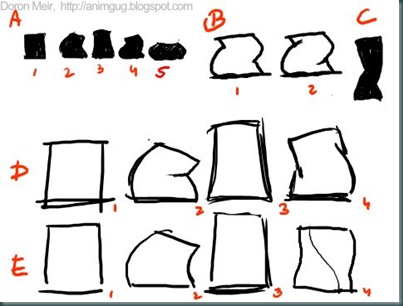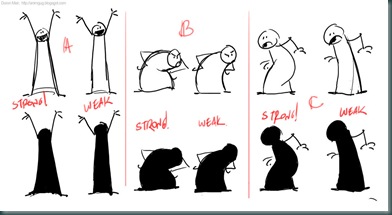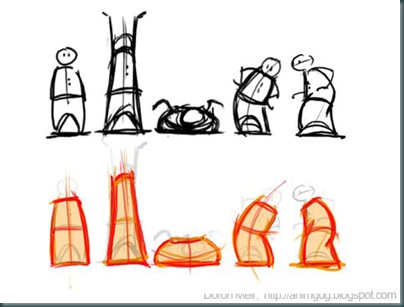I’m not terribly good with drawing landscapes. As an animator, people and gestures are my thing. But here and there I give it a go, just to make sure I still suck. :)
So there was this house/restaurant down in Old Jaffa, and as usual I had a hard time drawing it. I made several attempts before I was relatively satisfied with this one:
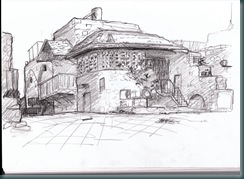
With me and sketching that very house was my good friend JP Vine, who’s as good as anybody at drawing these kind of things. I looked at his results and asked some questions, then I tried to capture it “JP style”:
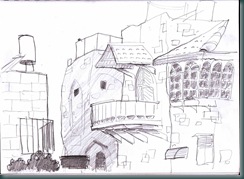
I think this result is much more fun, and even though it’s not structurally accurate at all, it retains much more of the building’s charm.
Back home, I scanned my initial attempt and I stared at it for a while on screen (always helps to see your work in a different way). I realized the main problem is that the drawing is drowning in detail. It’s flat, not just because there isn’t really a definite light source, but also and primarily because all the details have the same weight, the same level of importance in my drawing.
So I asked myself - what’s the most important thing about this house? What made it worth painting? I experimented with several answers. The answer that presented itself in the end took me a little bit by surprise. Turns out it wasn’t so much the architecture that got me interested - it was actually the colors. So, here’s the Photoshop sketch I did at home, trying to limit myself to what really matters:
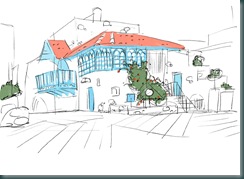
So…thanks for reading this relatively long post. Any thoughts on which drawing does a better job and why? My comments area is open for your input.


